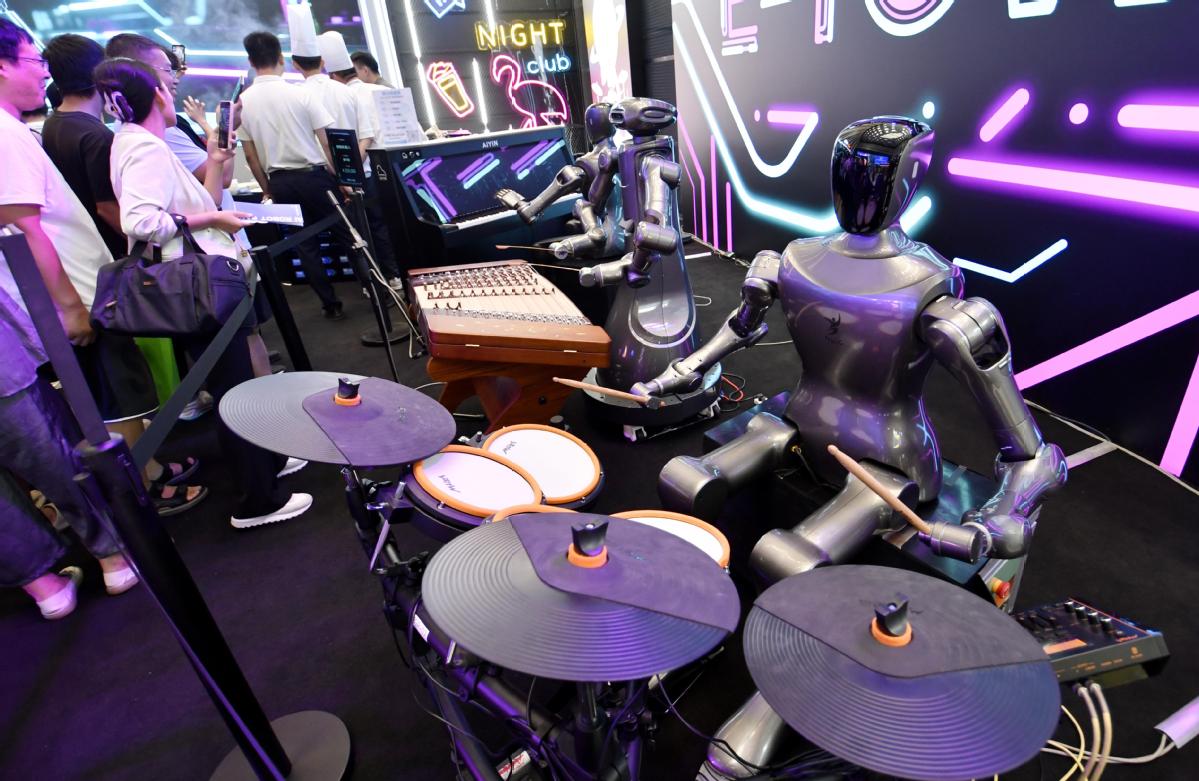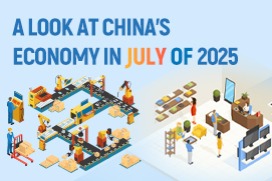Robot form not key for cost-effective business solutions


The dazzling acrobatics of humanoid robots racing, kicking footballs and sparring dominated the recent World Robot Conference. Over 50 companies showcased their bipedal marvels, transforming the event into a veritable "World Humanoid Robot Carnival".
Yet, amid this sensory overload, a crucial reality check emerged: the relentless focus on humanlike form risks overshadowing a fundamental question — do these robots deliver genuine, cost-effective solutions for business?
Jeff Burnstein, president of the Association for Advancing Automation in the United States, said during a forum at the conference: "Commercial users only care about solutions. They don't care if it's a humanoid, a mobile robot, a collaborative robot, an industrial robot, or even if it's a robot at all. They need a tool that gets the job done quickly, efficiently, accurately and affordably."
This cuts to the core of the industry's current dilemma. While the spectacle of humanoids captures headlines and public imagination, their path to widespread commercial adoption remains fraught with uncertainty.
Burnstein's caution extends beyond production numbers to the very concept's practicality: "Is a general-purpose humanoid the best solution? The industry hasn't reached a consensus." He argued that dedicated, task-specific robots — perhaps with multiple arms or fixed-base mobility — often prove more efficient and economical than a complex bipedal machine mimicking human locomotion, especially in structured environments like warehouses.
The shadow of unfulfilled promises looms large.
Burnstein drew a sobering parallel to autonomous vehicles, where initial predictions of rapid adoption vastly underestimated the technical hurdles, leading to significant delays. He forecasts a similar timeline for viable, widespread humanoid solutions.
"It might happen, but it's unlikely in North America within the next three to five years."
While acknowledging China's investment and innovation push in the sector, he reiterated his core message: "Shape is irrelevant".
The relentless focus on bipedal form risks diverting resources from solving the actual, often less glamorous problems businesses face.
Amid this caution, however, a significant development emerged, suggesting a potential shift from spectacle to substance.
Chinese company AgiBot announced a landmark deal with Mianyang Fulin Precision Machining Co Ltd on Aug 11, involving the deployment of nearly 100 of its wheel-based "Expedition A2-W "robots.
Dubbed by the company the world's first large-scale commercial implementation of embodied robots in smart manufacturing, this isn't about running marathons. These robots are tackling the gritty, essential work of materials handling — moving thousands of boxes daily, performing palletizing, de-palletizing, and feeding production lines across multiple factory zones. They are demonstrably boosting efficiency and shouldering significant logistical burdens within a real-world automotive parts manufacturing environment.
The deal offers a crucial blueprint. It moves decisively beyond pilot projects and technical demonstrations to production-critical deployment.
The Expedition A2-W, while possessing an upper torso akin to a humanoid for manipulation, utilizes wheels for mobility — a pragmatic design choice prioritizing function over the pure bipedal aesthetic for its target industrial tasks. This is the essence we should champion: solving the problem efficiently, not conforming to a specific shape.
The World Robot Conference's humanoid circus is undeniably entertaining and serves as a powerful showcase for technological ambition. However, the true measure of success for this burgeoning field lies not in winning a robot soccer match or captivating social media, but in replicating the tangible, bottom-line impact seen in commercial deployment.
For humanoid robots — or any robot — to transcend the hype, the industry must relentlessly focus on the imperative: Deliver the solution the business needs, in the most effective form possible, at a compelling cost.
The applause of the crowd is fleeting; the sustained hum of robots reliably solving real industrial problems is the sound of true commercial arrival. The race for relevance is won by utility, not just upright mobility.




































